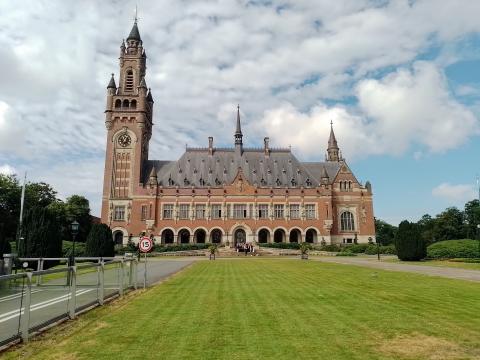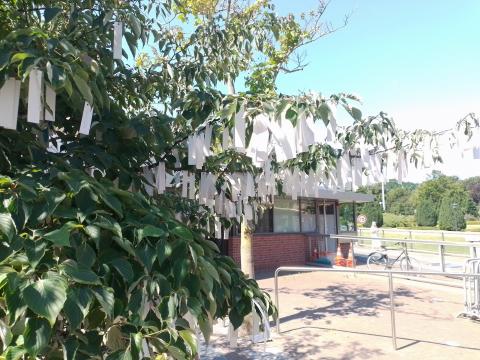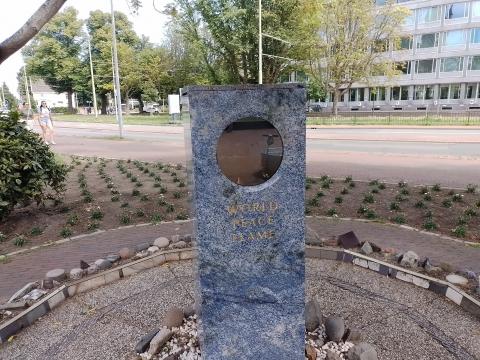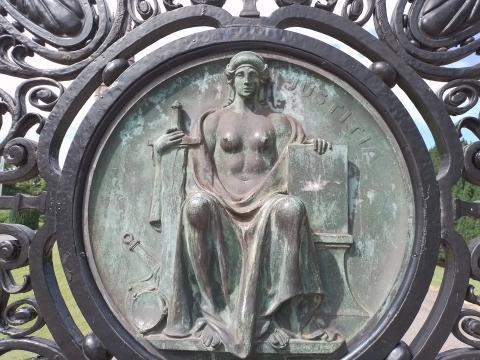Peace Palace

One of the most famous features of The Hague is the International Court of Justice which involves itself with the trials of alleged war criminals, as well as various other institutions of an global nature. They are housed in a building called the Peace Palace, which is usually closed to the public. Outside, there is a visitor centre where nonchalant staff hand headphones to their plurilngual punters who shuffle around a short exhibition on the virtues of world peace. Outside, there is a peace tree, where people can write peaceful messages and attach them to branches. And then there is the eternal flame of peace which burns in a little box surrounded by stones and pebbles from every nation.


The whole project was the result of the 1899 Peace Conference and was built, ironically, in 1913, less than year before the outbreak of the greatest conflict in human history. Twenty-one years later, an even bigger festival of bloodshed and suffering was celebrated by the human race, this time with the benefit of explosives dropped from the air, concentration camps armed with gas chambers and an atomic bomb or two. As I write this, there is war in the middle east, in Russia and the Ukraine, Niger, Sudan, Burma, Chad, Afghanistan, Somalia, Congo, Syria, Cameroon, and Yemen. What is going on at the Palace of Peace? What peaceful conversations are taking place between its staff amidst the landscaped grounds and gorgeously furnished rooms?
With the greatest respect to Andrew Carnegie, whom I admire, and others, who bankrolled the endeavour, it has been an abject failure. Another talking shop, another sponge to absorb funds and energy, with little to show in return. The problem with nations and the humans who lead them and populate them is not our failure to talk and communicate, nor is it our being purely unreasonable and failing to employ our intelligence. It is our corrupted, fallen sinful natures, which we can barely tame and never discount. When the Lord Jesus ‘predicted’ wars and rumours and wars as the AD period commenced, was He engaging in prophetic hinting, or was he merely offering a realistic assessment of fallen Adam’s folk, who are violent and thuggish, red in tooth and claw?
Peace comes when Jesus comes. War remains while we reject Him.

For when they say, “Peace and safety!” then sudden destruction comes upon them, as labour pains upon a pregnant woman. And they shall not escape. 1 Thessalonians 5:3
- Log in to post comments


 Sunday Worship 10.45am & 6.00pm
Sunday Worship 10.45am & 6.00pm